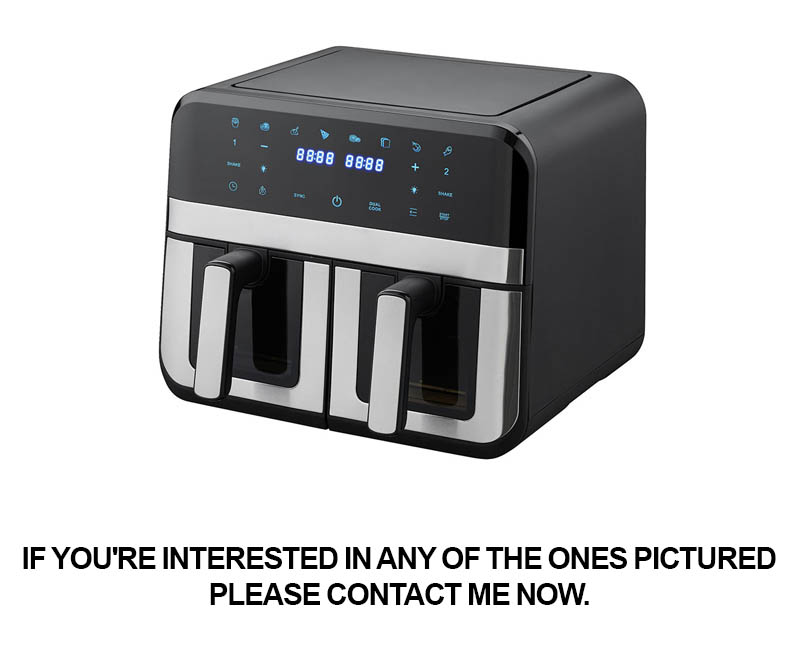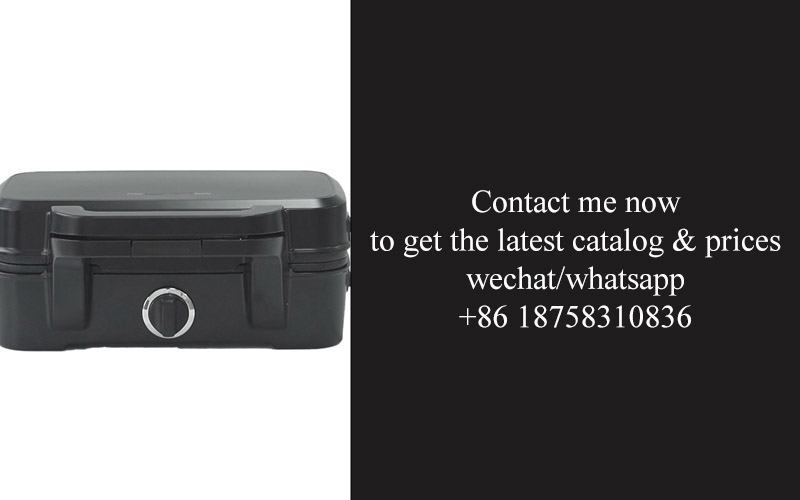Address
304 North Cardinal
St. Dorchester Center, MA 02124
Work Hours
Monday to Friday: 7AM - 7PM
Weekend: 10AM - 5PM
Address
304 North Cardinal
St. Dorchester Center, MA 02124
Work Hours
Monday to Friday: 7AM - 7PM
Weekend: 10AM - 5PM

As the juicer market continues to evolve, the role of Original Design Manufacturing (ODM) has become increasingly pivotal in driving innovation and customization. By understanding the nuances of juicer design services and their impact on the industry, businesses can harness the power of ODM to stay ahead in this dynamic sector. In this exploration, we delve into the intricate details of ODM’s influence on the juicer industry, showcasing its significance and potential for future growth.
The juicer landscape in the Western market has undergone a remarkable transformation over the years, evolving from simple citrus squeezers to sophisticated appliances that are not just kitchen tools but also statement pieces. Early juicers, often seen in retro kitchens, were mechanical wonders, requiring manual effort to extract juice from fruits and vegetables. These devices were bulky, noisy, and not exactly user-friendly.
As technology advanced, so did the juicers. The introduction of electric motors made the process easier and more efficient, but it wasn’t until the late 20th century that juicers began to reflect the aesthetic and functional desires of consumers. The sleek designs of the 1970s and 1980s were a stark contrast to the clunky predecessors, with manufacturers focusing on ergonomics and ease of use.
The 1990s saw the rise of centrifugal juicers, which became the go-to choice for many due to their speed and simplicity. These juicers separated juice from pulp using a spinning blade, allowing for quick juice extraction. However, they were not always the healthiest option, as the high speeds could heat the juice and reduce its nutritional value.
Enter the 2000s, and the market was flooded with a variety of juicers, each with its unique selling points. Masticating juicers, also known as slow juicers, gained popularity for their ability to extract more juice and nutrients from produce. These juicers crushed fruits and vegetables at lower speeds, which resulted in a cooler, more nutritious juice. The market also saw the emergence of cold-press juicers, which further refined the process, ensuring that the juice was cold and retained more of its vitamins and enzymes.
The Western market has become increasingly health-conscious, and this shift has influenced juicer design and functionality. Modern juicers are not just about extracting juice; they are about enhancing the overall health and wellness experience. Features like wide feeding chutes have made it possible to juice whole fruits and vegetables without pre-cutting, saving time and effort. Some models even come with attachments for making smoothies, nut butters, and baby food.
Smart technology has also made its way into juicers, with many now featuring digital displays, programmable settings, and even Bluetooth connectivity for remote control. These advancements have made juicers more intuitive and user-friendly, catering to the demands of a tech-savvy consumer base.
Another significant trend in the Western market is the emphasis on sustainability and eco-friendliness. Consumers are looking for juicers made from recyclable materials or with energy-saving capabilities. This green movement has led to the development of juicers that are not only efficient but also gentle on the environment.
The rise of juicing as a cultural phenomenon has also had a profound impact on the market. Influencers, celebrities, and even chefs have endorsed various juicer brands, influencing consumer preferences. The market has seen a surge in trendy designs, with colors and shapes that appeal to the aesthetic sensibilities of the younger generation.
In conclusion, the evolution of juicers in the Western market is a testament to the ever-changing needs and desires of consumers. From the early, labor-intensive models to the high-tech, eco-conscious appliances of today, juicers have come a long way. The future of juicers seems bright, with continued innovation focusing on health, convenience, and sustainability.

In the dynamic world of consumer electronics, the role of Original Design Manufacturing (ODM) has become increasingly pivotal, especially within the juicer market. ODM serves as a bridge between the vision of a brand and the reality of the product on the shelves. Here’s a closer look at how ODM contributes to innovation and customization in this sector.
ODM companies are adept at understanding the nuances of market demands and translating them into tangible product designs. They often work closely with clients to ensure that the final product aligns with the brand’s identity and the expectations of the target audience. This collaboration fosters a culture of creativity where new ideas can flourish.
The iterative process of ODM is a testament to its commitment to innovation. By continuously refining designs based on consumer feedback and technological advancements, ODM providers help push the boundaries of what’s possible in juicer design. This not only keeps products fresh and appealing but also allows for the integration of new features that enhance functionality and user experience.
Customization is another cornerstone of ODM’s contribution to the juicer market. Brands looking to differentiate themselves from the competition often turn to ODM for help. Whether it’s tweaking the aesthetics, integrating unique features, or even creating a completely new product line, ODM offers the flexibility to tailor each juicer to a brand’s specific needs.
Innovation through ODM is not just about aesthetics; it extends to the functionality of the product. ODM companies are often at the forefront of incorporating cutting-edge technology into juicers. This might include smart features that allow for remote operation, energy-efficient motors, or even innovative ways to extract juice that preserves more nutrients.
One of the key benefits of ODM is the speed at which it can bring a product to market. ODM providers have streamlined processes that allow for rapid prototyping and production. This agility is crucial in a market where consumer preferences can shift rapidly, and staying ahead of the curve is essential for success.
The relationship between ODM and customization is symbiotic. As brands seek to create a unique value proposition, ODM helps to bring these ideas to life. For example, a brand might want a juicer that not only performs well but also reflects the sustainability values of the company. ODM can design a juicer that is not only eco-friendly but also communicates this aspect of the brand’s ethos through its design and materials.
Moreover, ODM’s expertise in various manufacturing processes means that brands can explore different materials and finishes without the need for extensive in-house knowledge. This can lead to innovative designs that are both visually striking and functional, such as juicers with ergonomic handles or compact, space-saving designs.
Innovation and customization through ODM also extend to the marketing and branding of the product. ODM providers often offer branding services that go beyond the physical product, including packaging design and branding strategies that resonate with the target market.
Another important aspect of ODM is its global reach. Many ODM companies have operations in multiple regions, which means they are well-versed in local market trends and consumer preferences. This allows them to design juicers that not only appeal to a specific market but also to a global audience.
As the juicer market continues to evolve, the role of ODM will likely become even more integral. The ability to innovate and customize products at a pace that keeps up with consumer demands will be a key differentiator for brands. ODM providers that can adapt to these changes and continue to push the boundaries of design and technology will be at the forefront of the industry’s next wave of innovation.

In the ever-evolving world of kitchen appliances, the juicer has seen its fair share of transformations. The juicer design service plays a pivotal role in this evolution, blending aesthetics with functionality. From the sleek and modern to the eco-friendly and user-friendly, the nuances of juicer design services are vast and intricate.
The design of a juicer goes beyond just squeezing out fruit and vegetable juices; it’s about creating a product that resonates with the consumer’s needs and preferences. A juicer design service often starts with an in-depth understanding of market trends, consumer behavior, and technological advancements. This knowledge base is crucial in crafting a design that not only stands out but also offers a seamless user experience.
Customization is a cornerstone of juicer design services. No two kitchens are alike, and the same can be said for the individuals who use them. Designers must consider a variety of factors to ensure that the juicer they create is adaptable to different environments and lifestyles. For instance, the design might need to accommodate limited counter space, blend with various kitchen decors, or cater to specific dietary preferences.
One of the key nuances in juicer design is ergonomics. The handle, the shape of the container, and the overall size of the juicer all contribute to how it feels in the hand and how easy it is to maneuver. A well-designed juicer is intuitive to use, with controls that are placed logically and a build that makes cleaning a breeze. The design service must carefully balance form and function to create a juicer that is as enjoyable to use as it is to look at.
Material selection is another critical aspect. The durability and safety of the materials used in a juicer are paramount. A juicer design service must consider not only the aesthetic appeal of materials but also their impact on the taste of the juice, the ease of cleaning, and the overall lifespan of the product. High-quality, food-grade materials are often preferred to ensure both safety and longevity.
Innovation is the lifeblood of any successful juicer design service. Technology has introduced new features that were once unimaginable, such as quiet motors, automatic pulp ejection, and built-in air filters. Designers must stay abreast of these advancements and integrate them into their work to create a product that is cutting-edge and future-proof.
The design process for a juicer also involves a deep dive into the brand’s identity. A juicer design service works closely with the client to understand the brand’s values and mission, ensuring that the design reflects the company’s image. This could mean incorporating a specific color scheme, typography, or logo that aligns with the brand’s aesthetic and communicates its message to consumers.
Another nuance lies in the integration of smart features. As kitchens become more connected, juicers are no longer just appliances; they are smart devices. A juicer design service must consider how to integrate digital interfaces, such as touchscreens or smartphone connectivity, without compromising the user experience or the juicer’s design integrity.
Additionally, sustainability is a growing concern in product design. A juicer design service must think about the environmental impact of their designs, from the choice of materials to the packaging. This includes considering the recyclability of components and the energy efficiency of the juicer itself.
Lastly, the user experience is a holistic consideration. A juicer design service must create a product that is not only visually appealing but also emotionally engaging. This involves considering the sensory aspects of the juicer, from the sound it makes during operation to the smell of the fresh juice it produces.
In conclusion, the nuances of juicer design service are many and varied. From customization and ergonomics to innovation and sustainability, the design process is a complex tapestry that requires a keen eye for detail and a deep understanding of the consumer. By carefully navigating these nuances, designers can create juicers that not only meet the functional demands of the market but also resonate with the hearts and minds of the users.

In the competitive world of kitchen appliances, juicers have evolved from mere appliances to stylish, functional devices that are a centerpiece of modern kitchens. Here are some key features that truly set trend-setting juicers apart:
The sleek and modern aesthetics of these juicers are not just a visual appeal; they are designed to seamlessly integrate into any kitchen decor. From minimalist, metallic finishes to elegant, glass designs, the aesthetic appeal of these juicers often reflects the latest design trends.
These cutting-edge juicers come with advanced technology that ensures efficient and effective juice extraction. Features like variable speed controls allow users to adjust the juicing process to suit different types of fruits and vegetables, optimizing the yield and taste of the juice.
Durability is a cornerstone of trend-setting juicers. Constructed with high-quality materials such as stainless steel, these appliances are built to last. The sturdy construction not only guarantees a longer lifespan but also provides peace of mind for the user.
The ease of use is a key differentiator. Modern juicers are designed with user convenience in mind, featuring intuitive interfaces and easy-to-clean components. From simple, one-touch operation to the ability to juice directly into a bottle or cup, these features make the juicing process a breeze.
Trend-setting juicers often come with a range of attachments and accessories. These can include citrus juicers, fruit and vegetable strainers, and even pasta makers. This versatility allows users to expand their culinary possibilities beyond just making juice.
One of the standout features of top-tier juicers is their quiet operation. With the noise level being a significant concern for many, these appliances are engineered to run smoothly and quietly, ensuring a peaceful kitchen environment.
Energy efficiency is another crucial feature. These juicers are designed to consume less power while still delivering exceptional performance. This not only helps in reducing utility bills but also contributes to a more sustainable lifestyle.
Modern juicers are also smart in terms of space-saving design. Many models are compact and can be stored vertically or horizontally, making them perfect for small kitchens or for those who want to keep their countertops clutter-free.
The innovation in juicer design doesn’t stop at the physical appliance. Many of these juicers are equipped with smart technology that allows for remote monitoring and control. Users can track their juicing habits, receive maintenance reminders, and even program their juicer for automatic operation.
In terms of hygiene, these juicers are a cut above the rest. They come with removable parts that are dishwasher-safe, ensuring that cleaning up after juicing is quick and hassle-free.
Lastly, the innovation in juicer design is often accompanied by a commitment to sustainability. Materials used in the construction of these appliances are eco-friendly, and many brands are transparent about their sourcing and manufacturing processes.
These key features are what set trend-setting juicers apart in the market. They combine form and function, offering a premium juicing experience that caters to the needs and desires of today’s consumers.

In the ever-evolving landscape of the appliance industry, staying ahead of the curve is paramount. Market trends and data-driven insights play a pivotal role in shaping the direction of product development, especially in the competitive realm of juicers. Understanding these elements is crucial for manufacturers looking to create trend-setting products that resonate with consumers.
Consumer Preferences Shift with TrendsConsumer preferences are dynamic and can be influenced by a multitude of factors, including health consciousness, technological advancements, and cultural shifts. By analyzing market trends, companies can identify emerging preferences and adapt their juicer designs accordingly. For instance, a growing interest in cold-press juicers might indicate a shift towards healthier lifestyles and the desire for nutrient-rich beverages.
Data-Driven Insights for Informed DecisionsData-driven insights provide a solid foundation for informed decision-making. By analyzing sales data, customer feedback, and market research, manufacturers can pinpoint what features are most valued by consumers. This information is invaluable when it comes to designing juicers that not only meet but exceed customer expectations.
Personalization and CustomizationMarket trends often highlight the importance of personalization and customization. Data can reveal which features, such as adjustable speeds or multiple juicing attachments, are most sought after. This understanding allows manufacturers to offer juicers that cater to a wide range of user needs, from the casual juicer to the health enthusiast.
Innovation Through Technology IntegrationThe integration of technology into juicers is a key trend that cannot be ignored. Data-driven insights help in identifying which technological advancements are most likely to appeal to consumers. Smart features, such as Bluetooth connectivity for tracking nutritional intake, or automated cleaning cycles, can be developed based on consumer interest and usage patterns.
Predicting Future TrendsBy examining current market trends and historical data, companies can make educated guesses about future trends. This foresight is critical for long-term planning and investment in research and development. For example, if there’s a surge in eco-friendly products, manufacturers might prioritize the use of sustainable materials in their juicers.
Competitive AdvantageUnderstanding market trends and leveraging data-driven insights can give a company a significant competitive edge. By being the first to introduce a new feature or a design that aligns with current consumer desires, a brand can capture market share and establish itself as an innovator.
Customer Satisfaction and RetentionData-driven insights also play a crucial role in ensuring customer satisfaction and retention. By continuously monitoring customer feedback and usage data, manufacturers can make iterative improvements to their products, ensuring they remain relevant and meet customer needs over time.
Cost-Effective Product DevelopmentMarket trends and data-driven insights can also help in cost-effective product development. By identifying the most popular features and avoiding unnecessary add-ons, companies can streamline their product lines and reduce production costs without compromising on quality.
Market Trends as a Barometer of Health and WellnessThe health and wellness segment of the market is a barometer of societal values. By tracking trends in juicing, manufacturers can gauge the public’s interest in maintaining a healthy lifestyle. This can lead to the development of juicers that not only extract juice efficiently but also contribute to overall well-being.
In conclusion, market trends and data-driven insights are not just tools for product development; they are the lifeblood of innovation in the juicer industry. They guide the creation of products that not only meet but also anticipate consumer needs, ensuring that manufacturers stay ahead of the curve and continue to offer trend-setting juicers.

In the ever-evolving world of juicers, the landscape is shaped by innovative designs and cutting-edge technologies. As we delve into the realm of Original Design Manufacturing (ODM) for juicers, several emerging trends are poised to redefine the market. These trends are not just about aesthetics; they are about functionality, sustainability, and the seamless integration of technology into our daily lives.
Smart Integration: The next wave of juicers is expected to be smart devices. With the advent of IoT (Internet of Things), juicers are becoming more connected. Imagine a juicer that can sync with your smart kitchen appliances, provide nutritional information, and even order replacement parts automatically when it senses it’s time for a service. This level of integration is not just a novelty but a necessity in the modern kitchen.
Ergonomic Design: As consumers seek out products that not only enhance their lives but also provide a pleasant experience, ergonomic design is becoming increasingly important. Juicers with user-friendly interfaces, intuitive controls, and compact, space-saving designs are gaining popularity. The focus is on reducing the effort required to operate the juicer without compromising on performance.
Sustainability Focus: With the world becoming more environmentally conscious, sustainability is a key trend in juicer design. This includes the use of eco-friendly materials, energy-efficient motors, and innovative recycling processes. Companies are looking to minimize their carbon footprint and create products that are not just good for the consumer but also for the planet.
Multi-Functionality: The one-trick pony juicer is fading into the background. Modern consumers are looking for devices that can do more than just juice fruits and vegetables. New designs are incorporating features like homogenizers, food processors, and even pasta makers. These multifunctional juicers offer a comprehensive kitchen solution, reducing the need for multiple appliances.
Advanced Filtration Systems: The quality of juice is paramount, and the next generation of juicers is addressing this with advanced filtration systems. From fine to coarse settings, juicers are now equipped with filters that allow for a range of juice consistencies, catering to individual preferences. Some even come with self-cleaning features to maintain hygiene and ease of use.
Personalization: Tailoring the juicing experience to individual needs is a growing trend. ODM services are allowing for customizable juicers that can be adjusted for specific ingredients or recipes. Users can choose from various nozzles, blades, and even color schemes to make their juicer a personal statement in the kitchen.
Health and Wellness Emphasis: As the health and wellness movement continues to gain momentum, juicers are becoming more than just kitchen gadgets. They are now seen as tools for promoting a healthier lifestyle. Features like vitamin extraction, anti-oxidant preservation, and nutrient enrichment are becoming standard in top-of-the-line models.
Interactive Learning: With the rise of digital connectivity, juicers are becoming interactive learning tools. Some models now come with digital displays that provide nutritional information, cooking tips, and even recipe suggestions. This not only makes juicing more enjoyable but also educational.
Enhanced Safety Features: Safety is always a priority, and ODM juicer designs are incorporating advanced safety features. From child-proof locking mechanisms to automatic shut-offs when the unit overheats or becomes jammed, these features are designed to prevent accidents and ensure peace of mind.
Aesthetics and Style: Lastly, the aesthetic appeal of juicers is becoming a significant factor in their design. With sleeker, more modern aesthetics, juicers are now seen as a stylish addition to any kitchen. Materials like brushed stainless steel, glass, and bamboo are being used to create a visual appeal that complements contemporary kitchen designs.
As the industry continues to innovate, these trends in ODM juicer design will likely evolve, offering consumers more sophisticated, efficient, and personalized juicing experiences. The future of juicers is not just about the juice; it’s about the entire package – from the way they look to the way they enhance our lives.

In the competitive landscape of the European and American markets, Original Design Manufacturers (ODMs) have played a pivotal role in crafting successful juicer designs. These case studies highlight some of the innovative approaches and strategies that have resonated with consumers and set new standards in the industry.
A sleek, compact design with a minimalist aesthetic has become a hallmark of successful ODM juicer designs in both Europe and America. Brands like Breville and Hamilton Beach have embraced this trend, creating juicers that not only serve a functional purpose but also serve as stylish additions to modern kitchen countertops.
The integration of smart technology has been a game-changer for ODMs in the juicer market. For instance, a juicer from a leading ODM boasts a built-in Bluetooth feature that allows users to control the device through a smartphone app. This integration of technology enhances the user experience and positions the product as a forward-thinking, high-tech appliance.
Durability and ease of cleaning are two critical factors that ODMs have focused on to differentiate their juicer designs. A case in point is an ODM that developed a juicer with a dishwasher-safe parts system. The removable parts, including the blade and the filter, can be easily cleaned after each use, making maintenance a breeze for the consumer.
The versatility of juicers has expanded beyond just fruit and vegetable extraction, thanks to ODMs. Some ODMs have introduced juicers capable of handling nuts, grains, and even ice, providing a broader range of functionalities that cater to diverse consumer needs. This adaptability has opened up new markets and opportunities for growth.
Customization has become a key feature in the ODM juicer design process. One ODM has successfully launched a line of juicers that come with interchangeable parts and attachments, allowing consumers to adapt the device to their specific juicing preferences. From citrus presses to wheatgrass blades, this level of customization has resonated with consumers seeking a more personalized experience.
Energy efficiency and sustainability are also driving trends in ODM juicer designs. An ODM has designed a juicer that operates with minimal energy consumption, reducing electricity costs for users while also contributing to a greener planet. The juicer’s eco-friendly materials and design are not only attractive but also responsible.
The incorporation of health and wellness into juicer design is another area where ODMs have excelled. One notable example is an ODM that has developed a juicer with a specialized filter that removes impurities and maximizes nutrient extraction. This focus on health and wellness positions the product as an essential tool for a balanced lifestyle.
The user interface has been transformed by ODMs, with intuitive controls and displays becoming standard features in their juicers. A case study reveals an ODM that has designed a juicer with a clear, LED display that provides real-time feedback on the juicing process, enhancing the user experience and making the juicer more accessible to a wider audience.
The trend towards compact, space-saving designs has been embraced by ODMs, particularly in urban settings where space is at a premium. A juicer designed by an ODM offers a foldable and portable solution that allows users to store it easily and take it on the go, catering to the needs of busy professionals and frequent travelers.
Lastly, the aesthetic appeal of juicers has been elevated by ODMs, with sleek finishes and innovative materials like stainless steel, glass, and bamboo. These materials not only enhance the visual appeal but also the durability and longevity of the product, making it a sought-after item for consumers looking for a high-quality, stylish appliance.

Understanding the unique needs of your customers is crucial when leveraging ODM (Original Design Manufacturing) services for your juicer business. By doing so, you can tailor your products to stand out in a competitive market. Here’s how you can make the most of ODM services:
Market Research and Consumer Insights: Dive deep into market research to uncover the latest consumer trends and preferences. This involves analyzing data on what features consumers are looking for in juicers, their price sensitivity, and the types of marketing messages that resonate with them.
Collaboration with Design Experts: Partner with ODM companies that have a team of experienced designers. These experts can bring fresh perspectives and innovative ideas to the table, ensuring that your juicers are not only functional but also aesthetically pleasing and user-friendly.
Customization for Brand Identity: Your juicer’s design should reflect your brand’s identity and values. Whether it’s through color schemes, logos, or unique design elements, the ODM process allows you to create a product that aligns with your brand image and resonates with your target audience.
Functionality and User Experience: Prioritize the functionality of your juicers. Features like ease of cleaning, quiet operation, and efficient juice extraction are non-negotiable. The ODM process should involve rigorous testing to ensure that the final product meets these criteria.
Material Selection: The choice of materials is critical for both the longevity and sustainability of your juicers. ODM partners can advise on materials that are durable, eco-friendly, and meet safety standards. This not only satisfies consumer demands but also contributes to your brand’s reputation.
Cost-Effective Solutions: While quality is paramount, cost-effectiveness is also a significant factor. ODM services can help optimize the design to reduce manufacturing costs without compromising on performance. This balance is key to maintaining competitive pricing.
Sustainability and Eco-Friendly Designs: As consumers become more environmentally conscious, offering sustainable products is a strong selling point. ODM services can incorporate eco-friendly design elements, such as biodegradable materials or energy-efficient designs, into your juicers.
Regulatory Compliance: Ensure that your juicers comply with all relevant safety and regulatory standards. ODM partners are well-versed in these requirements and can guide you through the process of certification.
Iterative Design Process: Be prepared for an iterative design process. ODM services often involve multiple rounds of design refinement, testing, and feedback. This ensures that the final product is as close to perfect as possible.
Global Market Adaptation: Consider the global nature of your market. ODM services can help adapt your juicer designs to different regions, taking into account cultural preferences, climate, and local regulations.
Innovation and Technology Integration: Stay ahead of the curve by integrating the latest technologies and innovations into your juicers. This could include smart features, connectivity options, or advanced materials that enhance the user experience.
Quality Control and Assurance: Maintain stringent quality control measures throughout the ODM process. This ensures that every juicer that leaves the factory meets your high standards and the expectations of your customers.
Marketing and Sales Support: A good ODM partner will also offer marketing and sales support. They can provide design files, product specifications, and branding guidelines to help you promote your juicers effectively.
Long-Term Partnerships: Establish long-term relationships with ODM providers. This ensures a steady supply of high-quality products and the opportunity to collaborate on future designs.
Feedback Loop: After your juicers hit the market, stay connected with your customers. Collect feedback to understand what works and what doesn’t. This information can be invaluable for future design iterations and product improvements.
By carefully considering these aspects and working closely with an ODM partner, you can create juicers that not only meet the needs of your customers but also differentiate your brand in a crowded marketplace.

The ODM (Original Design Manufacturer) model has revolutionized the juicer industry, offering brands and manufacturers a competitive edge in a crowded market. This approach not only allows for innovation but also ensures that each product meets the evolving demands of consumers. By integrating ODM services into their business strategies, companies can tap into a world of possibilities that go beyond standardization. Let’s delve into how ODM has shaped the juicer industry and why it remains a potent tool for those looking to stand out.
In the dynamic landscape of the juicer industry, ODM has become a beacon of innovation. It empowers manufacturers to create products that are not just functional but also aesthetically pleasing and tailored to the specific needs of different market segments. From sleek, compact designs for urban dwellers to robust, high-performance models for health-conscious consumers, ODM has helped craft a diverse range of juicers that cater to a wide audience.
Customization is a cornerstone of the ODM process, allowing brands to distinguish themselves in a crowded marketplace. By collaborating with ODM partners, companies can bring their unique visions to life, ensuring that each juicer is not just a product but a reflection of their brand identity. This level of personalization not only enhances customer satisfaction but also fosters brand loyalty.
One of the most significant advantages of ODM is the agility it provides in responding to market trends. In an industry where consumer preferences can shift rapidly, having an ODM partner means being able to adapt quickly. Whether it’s incorporating the latest health trends, adopting eco-friendly materials, or embracing smart technology, ODM allows companies to stay ahead of the curve without the need for extensive in-house design capabilities.
The success stories in the European and American markets are numerous. Take, for instance, the partnership between a European juicer brand and an ODM manufacturer that resulted in the introduction of a juicer with an integrated pulp ejection system. This feature, which made cleanup easier, resonated with consumers who were looking for convenience and efficiency. The product quickly gained popularity, propelling the brand to new heights.
Another example is a U.S. juicer brand that, through ODM, developed a juicer with a variable speed control, allowing users to adjust the speed to match the type of produce being juiced. This innovation appealed to both health enthusiasts and those new to juicing, as it ensured that every piece of fruit or vegetable was extracted to its full potential.
The cost-effectiveness of ODM cannot be overstated. By outsourcing the design and manufacturing process, companies can avoid the high initial investment required for setting up an in-house design team. This cost-saving measure can be reinvested into other areas of the business, such as marketing or product research and development.
However, it’s important to note that the success of an ODM partnership is not guaranteed. The key lies in choosing the right ODM partner—one that understands the brand’s vision and values, and has the technical expertise to bring those ideas to life. A strong collaboration between the brand and the ODM manufacturer can lead to products that not only meet but exceed market expectations.
Moreover, ODM allows for a more sustainable approach to product development. By working with partners who are committed to environmental responsibility, companies can ensure that their juicers are not only innovative but also eco-friendly. This is particularly crucial in today’s market, where consumers are increasingly conscious of their carbon footprint and the sustainability of the products they purchase.
In conclusion, the power of ODM in shaping the juicer industry is undeniable. It drives innovation, enhances customization, and provides cost-effective solutions that enable companies to thrive in a competitive landscape. By leveraging ODM services, brands can stay relevant, meet consumer demands, and ultimately, build a stronger market presence. The future of the juicer industry looks bright, and ODM will undoubtedly continue to play a pivotal role in its evolution.